Key takeaways:
- Carbon pricing mechanisms, like cap-and-trade and carbon taxes, incentivize reduction of greenhouse gas emissions by assigning a cost to carbon outputs.
- Implementing carbon pricing fosters innovation and accountability in businesses, influencing consumer preferences towards sustainability.
- Challenges in deploying carbon pricing include political resistance, need for clear communication, and difficulties in accurately measuring carbon emissions.
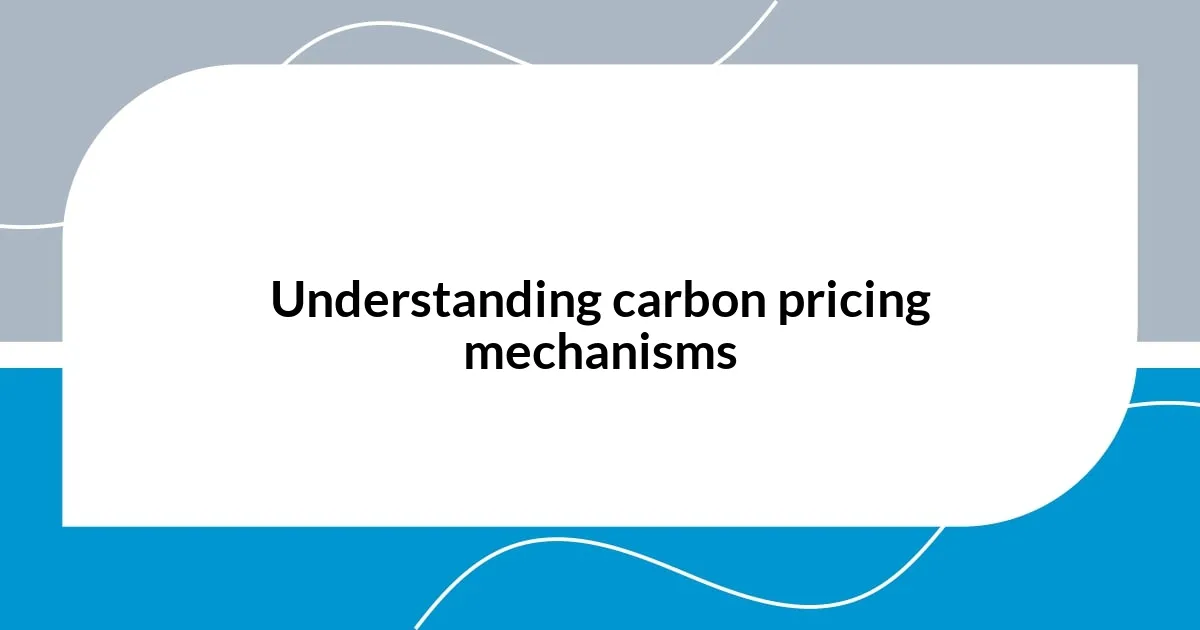
Understanding carbon pricing mechanisms
When I first encountered carbon pricing mechanisms, I felt a mix of intrigue and confusion. These systems are essentially designed to put a price tag on carbon emissions, encouraging businesses and individuals to reduce their greenhouse gas output. Have you ever considered how much carbon your daily activities produce? It’s eye-opening to think about the carbon footprint we inadvertently create.
Understanding the two main types of carbon pricing—cap-and-trade systems and carbon taxes—can really change the way we think about environmental responsibility. Cap-and-trade limits total emissions and allows companies to buy and sell allowances, while carbon taxes impose a direct cost per ton of emissions. Personally, I find the negotiation aspect of cap-and-trade fascinating; it’s a real-world example of market dynamics at play.
I remember reading about countries that have successfully implemented carbon pricing and witnessing a tangible shift in their energy practices. It’s remarkable how giving a financial incentive can drive innovation and behavior change. Do you think this could be the key to a more sustainable future? In my experience, if more people understood the potential of carbon pricing, we might see a broader acceptance and even a demand for these mechanisms.
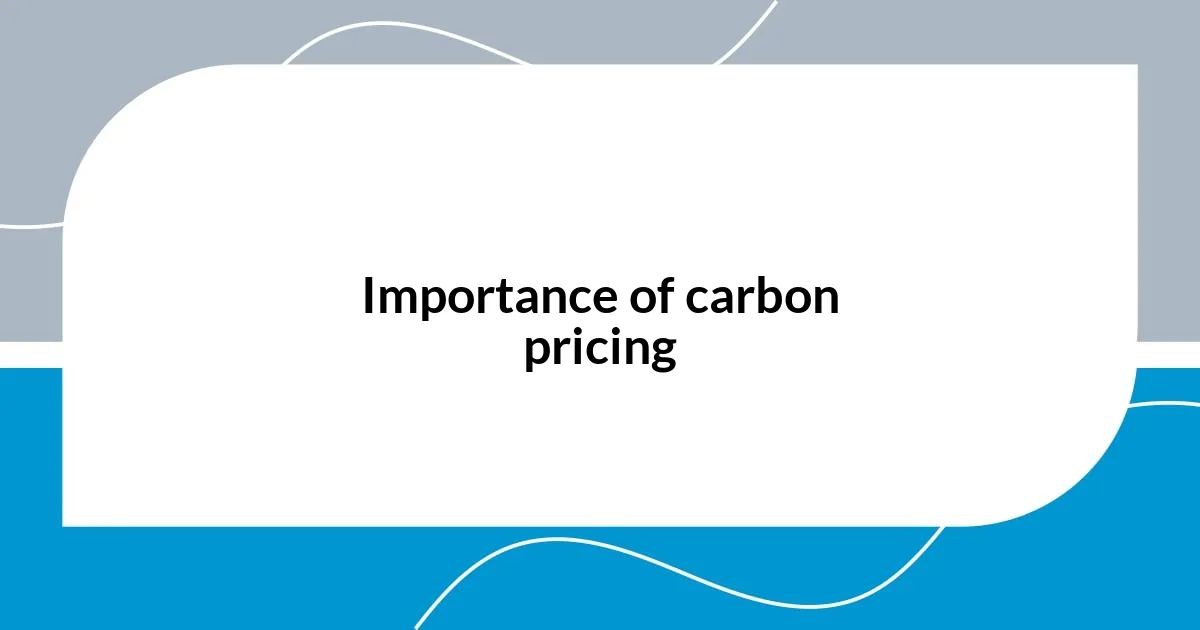
Importance of carbon pricing
The importance of carbon pricing cannot be overstated. Personally, I’ve seen how it serves as a vital tool in steering our economy towards sustainability. By integrating the cost of carbon emissions into everyday decisions, we send a clear signal to businesses and consumers that reducing emissions isn’t just beneficial for the planet—it’s also good for the economy. I vividly remember a local startup that retooled its operations to minimize carbon emissions after realizing the financial benefits of going green. They not only reduced costs but also attracted more customers who valued sustainability.
- Encourages innovation and investment in clean technologies.
- Creates financial incentives for individuals and businesses to reduce their carbon footprints.
- Helps to generate revenue for public projects that can combat climate change.
- Promotes accountability and transparency in emissions reporting.
- Drives a shift towards renewable energy sources by making fossil fuels less economically appealing.
In my experience, it’s this blend of economic and environmental benefits that enhances the appeal of carbon pricing. I often reflect on how we might overlook the power of economic levers in making significant, positive changes in our society. It’s not just about saving the planet; it’s about seizing opportunities for growth and transformation.
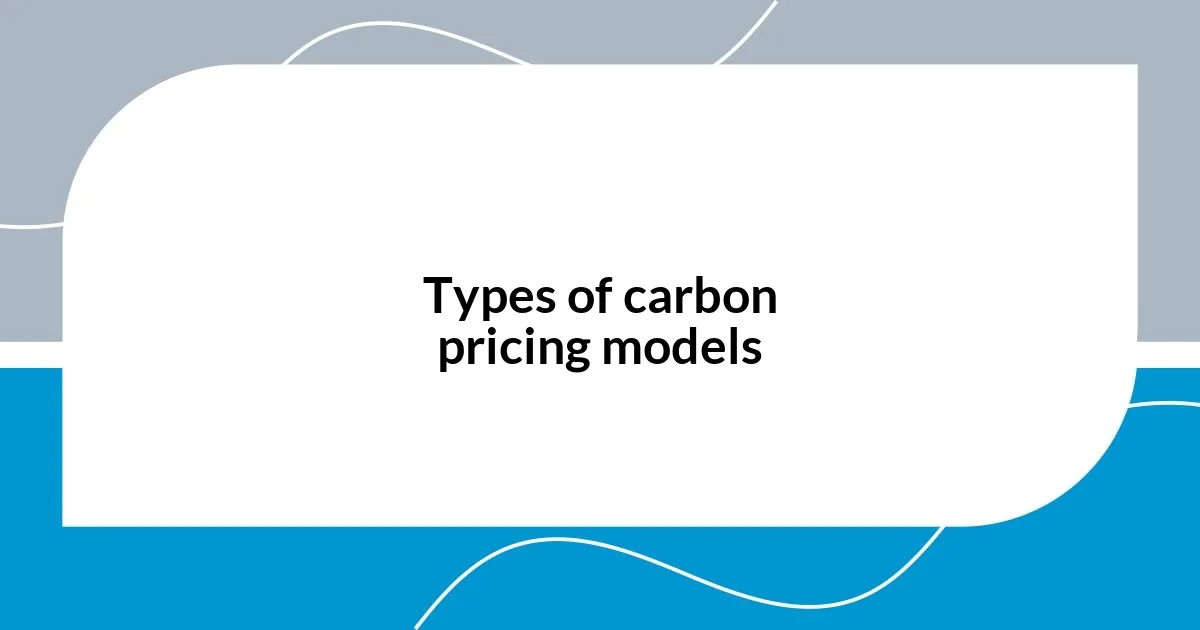
Types of carbon pricing models
The two principal carbon pricing models are cap-and-trade and carbon taxes, each with its unique approach to reducing emissions. I find cap-and-trade systems particularly intriguing because they create a market for carbon allowances, allowing companies that reduce emissions to sell their extra allowances. This fosters a sense of competition and innovation as firms strive to be more efficient. Have you ever considered which companies might profit from this system? It’s fascinating to think about the shifts in corporate strategies that can arise.
On the other hand, carbon taxes straightforwardly set a price per ton of carbon emitted, offering clarity and predictability. I’ve spoken to several entrepreneurs who prefer this method because it simplifies budgeting and planning. The price tag on emissions makes it clearer how reducing carbon output can impact a bottom line, sparking proactive changes in business practices. Do you think this certainty drives better decision-making in businesses?
Each model has its advantages and challenges, and understanding this can help us appreciate the complexities of implementing an effective carbon pricing system. In my own experience, I’ve seen communities debate which system suits them best, often weighing immediate economic impacts against long-term environmental goals. It reminds me that every choice carries weight—just like the decisions we make in our daily lives regarding energy use and sustainability.
| Model | Description |
|---|---|
| Cap-and-Trade | A market-based approach where companies can buy and sell emission allowances, creating a financial incentive to reduce emissions. |
| Carbon Tax | A fixed price imposed on each ton of emitted carbon dioxide, encouraging businesses to cut emissions for economic reasons. |
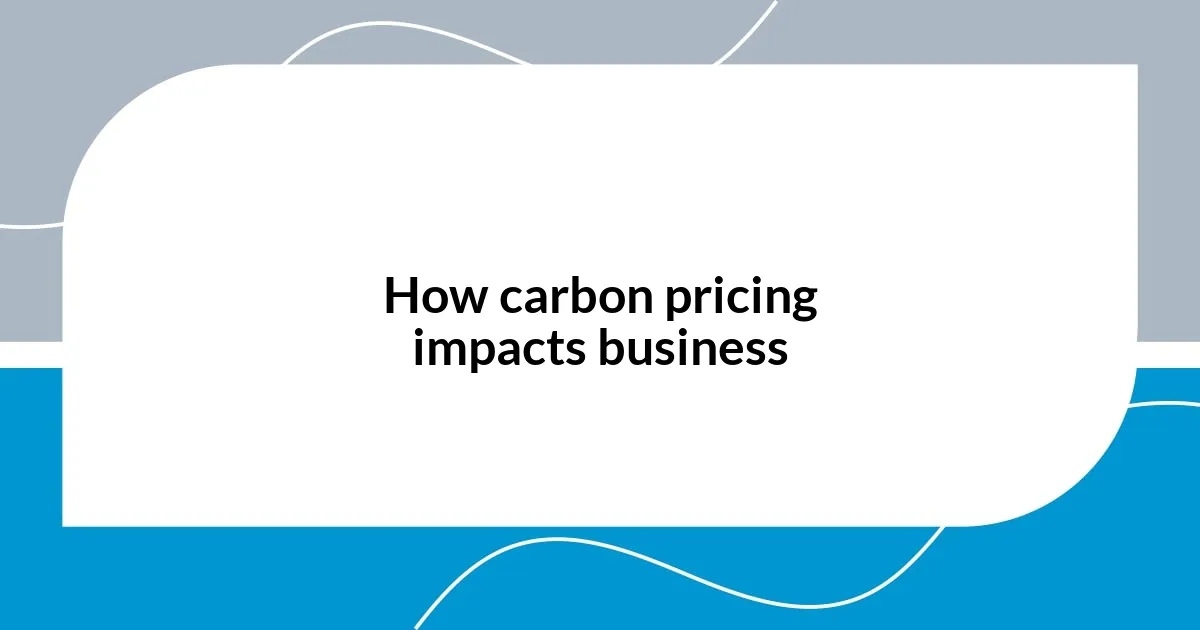
How carbon pricing impacts business
The impact of carbon pricing on business models is profound. I recall a conversation with a friend who runs an energy-intensive manufacturing plant. He was initially skeptical about carbon pricing, fearing it would ramp up costs. However, when he embraced the concept, he discovered the potential for optimizing processes and investing in more efficient technologies, ultimately slashing costs in ways he hadn’t anticipated. Isn’t it interesting how something that seems daunting at first can turn into a catalyst for change?
Moreover, carbon pricing can reshape consumer preferences, pushing businesses to adapt or risk losing market share. I’ve watched smaller companies thrive by branding themselves as eco-friendly, tapping into a conscious consumer base that increasingly values sustainability. It’s heartening to see how these businesses don’t just comply with regulations but actively leverage them to create unique selling propositions. Have you noticed how often you choose products based on their environmental impact? It’s becoming a powerful decision-making factor for many consumers.
Additionally, carbon pricing cultivates a culture of accountability within businesses. I once attended a sustainability seminar where a CEO shared how reporting emissions became a key performance indicator for his organization. This shift not only motivated employees to innovate but also instilled a sense of collective responsibility. Wouldn’t we all like to work for companies that prioritize planet-friendly practices? It’s clear that embracing carbon pricing can promote an upward trend in ethical business practices while also addressing climate change.
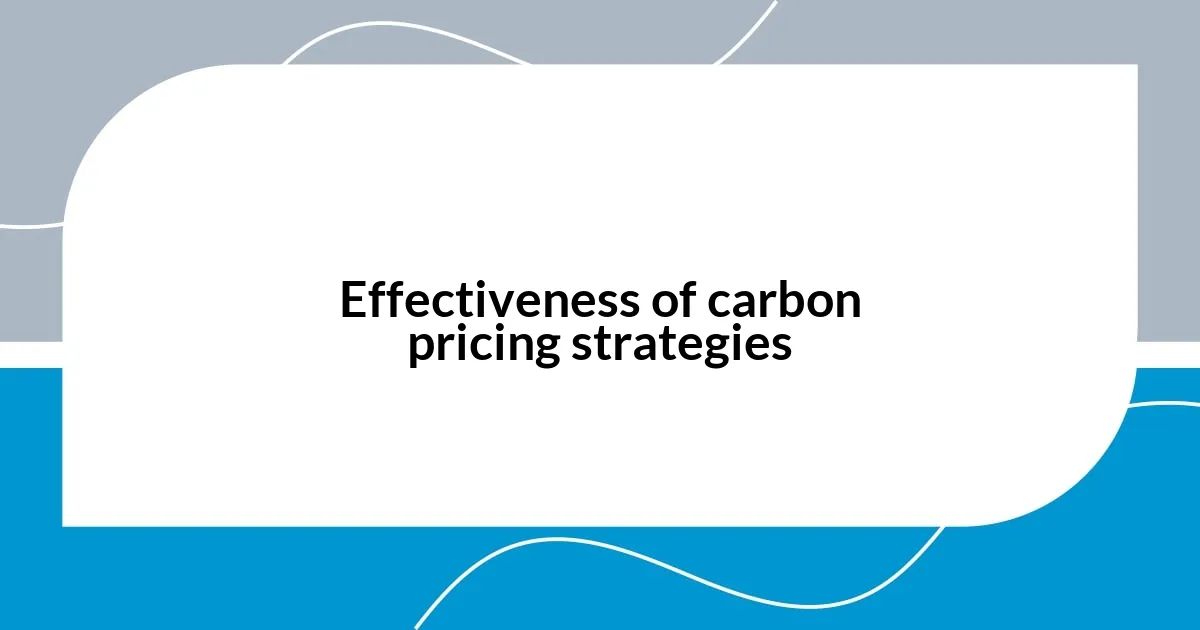
Effectiveness of carbon pricing strategies
The effectiveness of carbon pricing strategies can be quite compelling, especially when you look at the measurable changes in emissions. In one case, a community I visited introduced a carbon tax, and the immediate drop in emissions was hard to ignore. It’s like turning the lights on in a dark room; once businesses recognized the financial implications of their carbon footprints, many began to innovate rapidly. Isn’t it fascinating how a price tag can shift mindsets so dramatically?
Cap-and-trade systems, on the other hand, showcase a different storytelling approach to effectiveness. I remember attending a workshop where a local organization shared success stories of companies that invested in renewable energy purely to earn those trading credits. Hearing about businesses transforming their operations to not just meet compliance, but to thrive in a market-driven by sustainability, felt like a breath of fresh air. Who would have thought that competition over carbon allowances could spark such dedication to green initiatives?
There’s also the emotional aspect of individuals rallying behind carbon pricing strategies. I often think about how my peers and I have become advocates for sustainability, thanks in large part to the conversations sparked by these pricing mechanisms. When communities see the tangible benefits of a cleaner environment, it cultivates pride and a sense of stewardship. Have you ever experienced that moment of realization, where you suddenly feel empowered to effect change? That’s the kind of shift carbon pricing can trigger—not just for companies, but for society as a whole.
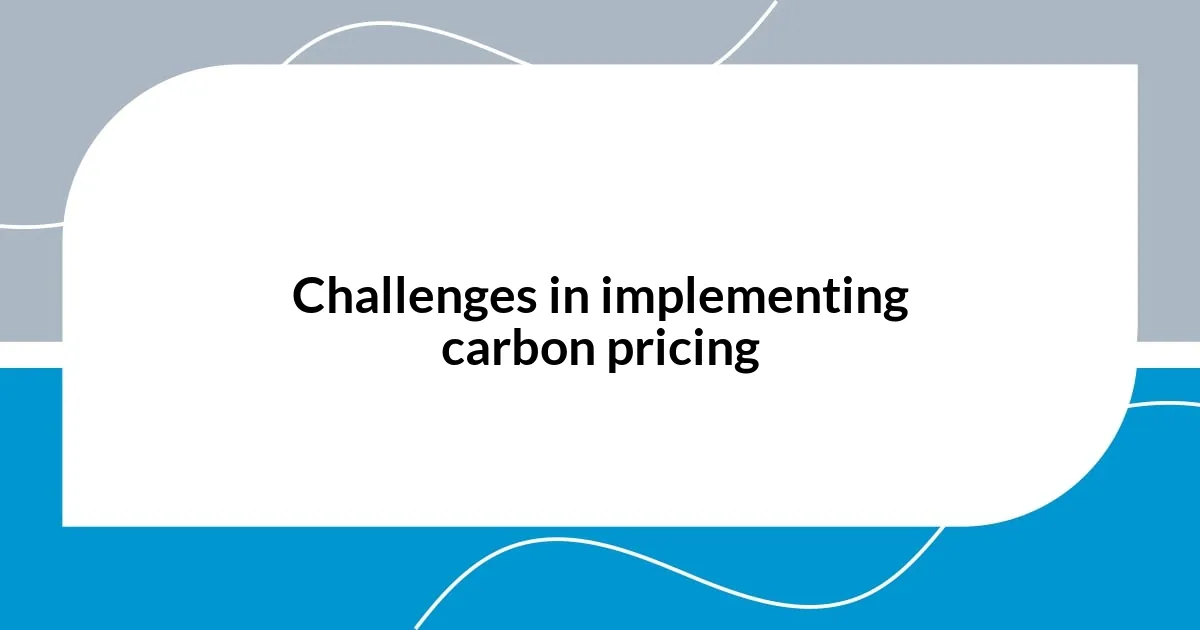
Challenges in implementing carbon pricing
Implementing carbon pricing isn’t without its hurdles. One major challenge I’ve encountered in discussions with fellow advocates is the political resistance it often faces. It can be disheartening to see policymakers hesitant to embrace such mechanisms, fearing backlash from constituents. Have you ever thought about how difficult it must be for leaders to balance environmental goals with economic concerns?
Another obstacle lies in ensuring that all stakeholders understand and accept the pricing structure. I remember a community meeting where local businesses voiced their confusion about a proposed carbon credit system. Their concerns highlighted the importance of transparent communication. If stakeholders feel left in the dark, they are less likely to support initiatives that could ultimately benefit everyone. Isn’t it fascinating how clarity can create buy-in?
Then there’s the intricacy of measuring carbon emissions accurately. In my experience, this can be a daunting task for many organizations, particularly smaller ones lacking the resources for extensive monitoring. I’ve seen how this uncertainty breeds skepticism; organizations may worry that they’re being penalized unfairly. How can we expect widespread acceptance if the very foundation of the pricing system feels unstable?